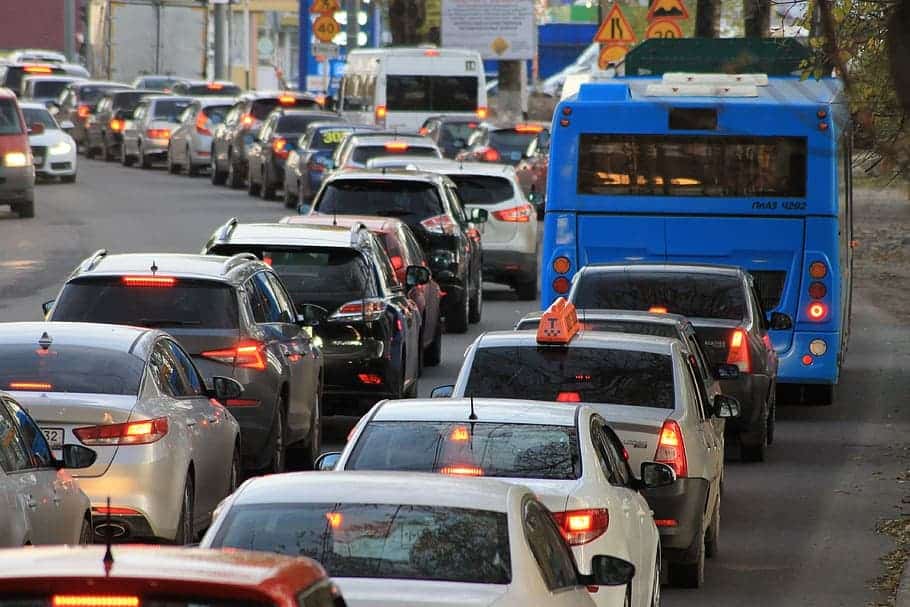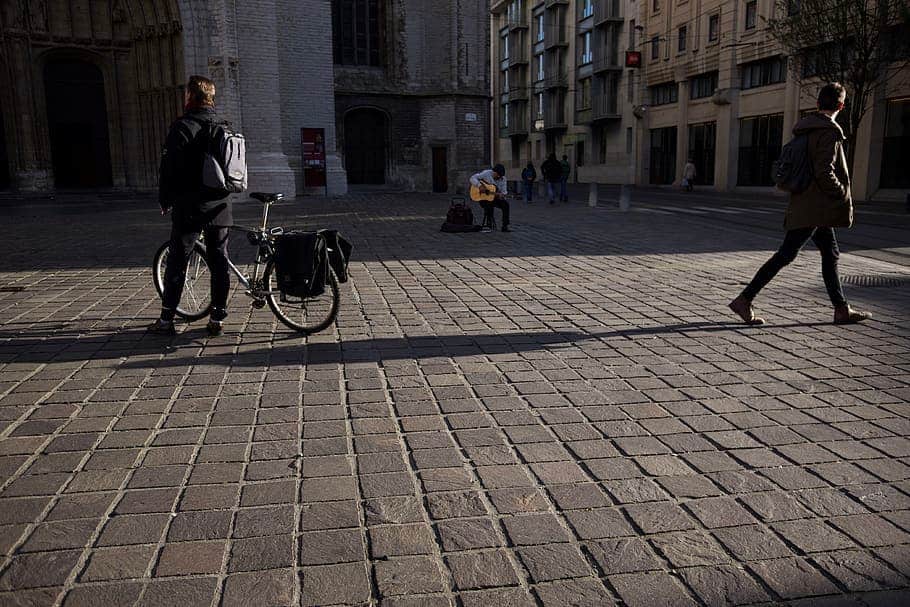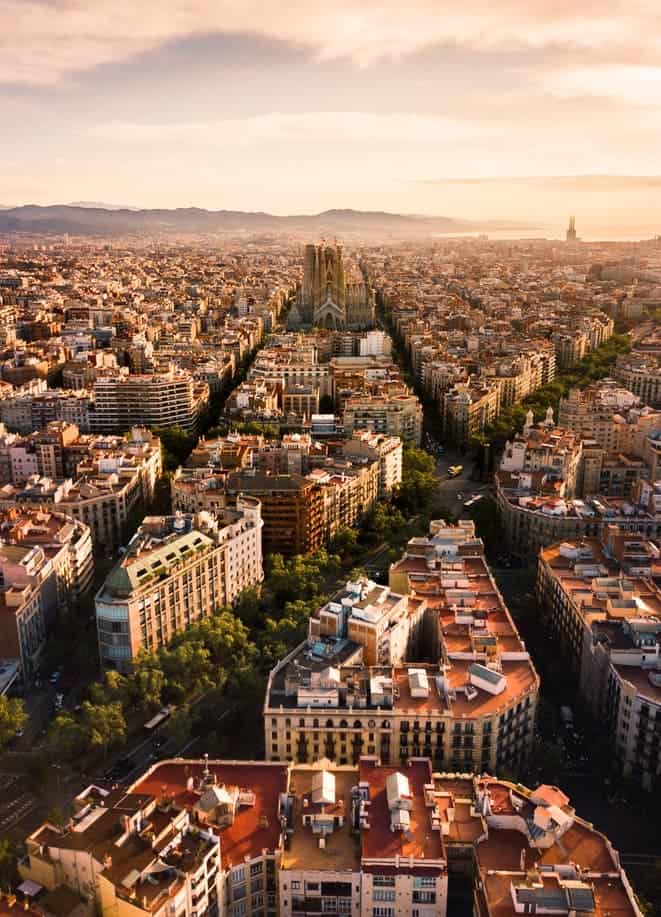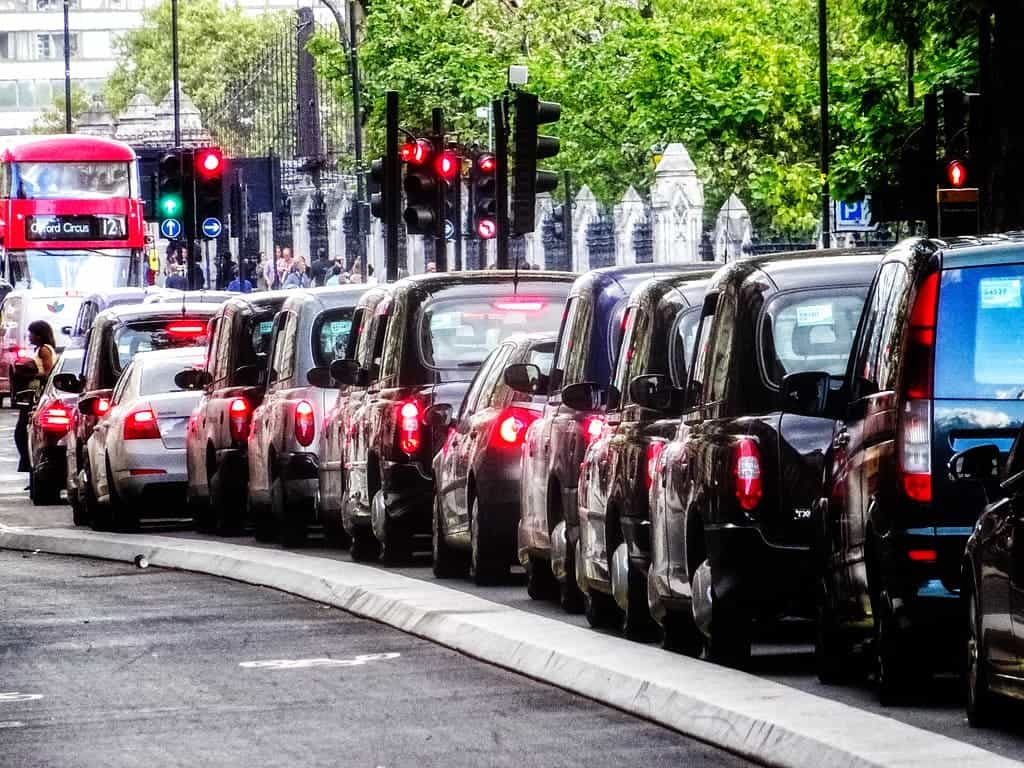As anyone who’s used the public transportation in Birmingham, UK, can tell you — it’s not great. There’s no subway, train stations are few and far between, and buses often find themselves delayed by traffic.
But Birmingham is confident in its ability to compensate for all that and reduce people’s reliance on personal cars. Under plans being considered by the council to reduce emissions, the city would ban private cars from the city center completely, allowing only lorries, buses, and taxis.
Birmingham is far from alone in this quest. Cities all over Europe are starting to ban cars. It’s usually a partial ban — only for some types of cars, for some days, or for some areas. But European cities (and a few outside of it) are starting to take this idea more and more seriously.
This year may be the year we finally see car bans becoming mainstream.

Different approaches, same goal
The city of Dubrovnik became famous as the filming site of some of the most iconic scenes in Game of Thrones. But travelers have known about it for years. Its medieval buildings, Mediterranean cuisine, and clear blue sea have drawn millions, and few did not enjoy it.
But in recent years, people have probably enjoyed it even more. In early 2016, the city banned private cars from its historic center. “We are doing it to reduce congestion”, said then Dubrovnik Mayor Andro Vlahušić .
The argument is simple and straightforward: Dubrovnik’s small, windy streets were not built to deal with high levels of traffic. There are too many cars on the streets, they cause traffic jams and inefficiency. In Dubrovnik, like in most other places, cars usually contain only one or two people, and cars needlessly fill up the streets (and often sidewalks). After the car ban, the city center became much more walkable and friendly, encouraging both locals and tourists to explore its beauty on foot or bikes.
Dubrovnik is no longer an exception.
As of January 2020, the most polluting cars have been banned from Ghent, Belgium. This comes after several areas in the city were already car-free. ‘The streets are more alive’, one local was quoted as saying, and despite expected protests from some motorists, the ban was well-received overall. Local owners of high-emission cars can apply for grants to trade their vehicle for a lower-emission one.
There is another argument, and it’s surprising that Vlahušić did not emphasize it more given his medical background: health. Pollution is a well-known trigger of asthma and other respiratory diseases. Emissions from cars are known to cause a number of health issues.
‘The air tastes better’, said journalist Tine Hens, commenting on Ghent’s car ban.

Pandemic changes
The pandemic has, of course, also had an impact on plans to ban cars. In many parts of Europe, the pandemic has sparked interest in cycling and walking. The city of Milan, one of the first to be hard-hit by the virus, announced ambitious plans to reallocate street space from driving to cycling and walking. It’s not a new idea, but it has massive popular support for a change.
“We tried to build bike lanes before, but car drivers protested,” says Pierfrancesco Maran, Milan’s deputy mayor for Urban Planning, Green Areas and Agriculture. “Someone said to me: ‘You needed coronavirus to [introduce them] here!'”
Milan is far from the only town to do so. From Bucharest to Brussels, and from Lisbon to Lyon, Europe’s appetite for cycling lanes has been fueled by the coronavirus pandemic, triggering unprecedented investment. It’s not just Europe: pop-up bike lanes have appeared in cities including Berlin, Budapest, Mexico City, New York, Dublin and Bogotá. The lockdowns drastically reduced the number of cars on the street, and some saw a possibility to keep it that way. This has contributed to a drop in carbon dioxide and pollutant emissions, and encouraged people to replace driving with other forms of transportation. In the Colombian capital of Bogotá, mayor Claudia López closed 117km (72.7 miles) of streets to cars to make cycling and walking easier during the lockdown. In Paris, mayor Anne Hidalgo’s had already promised to make every street cycle-friendly by 2024 and remove 72% of Paris’s on-street car parking spaces. But a post-lockdown plan was also announced, including the creation of temporary cycle lanes on metro line routes.
Though these are temporary measures for the most part, they may last in the long-term. London’s mayor Sadiq Khan has made it clear he wants these changes to last and not just return to a business-as-usual scenario, and in many cities, people seem to overwhelmingly support these measures. A recent survey in Toronto demonstrated overwhelming support for these initiatives. It found that 84 per cent of respondents supported the construction of protected bike lanes and 85 per cent wanted the city to do more to protect vulnerable road users.
Making cities unfriendlier to cars can also save lives, as was observed in Norway’s capital, Oslo. In the past year, Oslo has not had a single fatality on its streets, and this is largely owed to anti-car and pro-pedestrian measures.
Larger cities, such as Barcelona, Paris, and Berlin, are also launching similar schemes. In Paris‘ central areas, the first Sunday of every month is free of cars, and cars made before 1997 have been banned from the city center on weekdays. Berlin was less ambitious than other German cities and only banned some cars from select shopping streets. But Barcelona took a more decisive approach.
In Barcelona, the poor air quality is responsible for more than 350 premature deaths annually. This is not an unusual figure — most major cities have poor air quality, and this poor air quality translates into premature deaths. Barcelona designated an area of 95 km2 as a low-emission zone — essentially covering the entire metropolis — and all petrol cars registered before 2000 and diesel cars bought before 2006 are banned from entering it.
Spain’s capital Madrid also has a similar area. It’s much smaller but more restrictive. It’s still a step in the right direction, but it’s only a step.
A total ban?
These attempts are varied in their approach and scope, but they all have one thing in common: they’re incomplete.
Calling it a car ban is not exactly true. It is a partial car ban, but the “partial” part still refers to a minor part of all cars — the worst offenders, but still a minor part.
The next logical step is a total car ban.

In December 2016, Athens Mayor Giorgos Kaminis joined the mayors of Paris, Madrid, and Mexico City in a pledge that they would ban all diesel vehicles from the cities by 2025. Kaminis hoped to eventually ban cars altogether from city’s core. But here’s the thing about these pledges: they extend beyond the mayor’s mandate. It’s something common to all long-term pledges, particularly when it comes to things like climate change: sure, you can promise that you’ll do this or that in 20 years, but how can you guarantee it with electoral cycles of 4 years?
Similarly, the pledges to keep cities car-free ring somewhat hollow. In Madrid, the newly-elected mayor pledged to reverse the partial car ban, even as most of the population supported it. Madrid eventually kept its car ban, but it goes to show just how easily this type of project can be undone.
A definitive car ban would be more permanent and harder to overturn, but it would also need to be carefully planned. Roads still need to be maintained not only for lorries, but also for emergency access. Public transport would need to be improved — if you take cars away from people, you have to offer an easy transportation method to replace it. New cities could be carefully designed with this in mind, but older cities (especially European cities, many of which are based on medieval or ancient cities) cannot be easily retrofitted.
In addition, partial attempts to reduce congestion and the number of cars on the streets can often have unpredicted effects — as some cities are already noticing.
London’s woes

Perhaps no city has struggled as much with fighting car congestion as London. The British capital introduced a congestion tax all the way in 2003, adding another, additional tax for older diesel cars. This additional tax alone is £24 ($31) — a hefty sum for a day’s driving. But despite all these measures, and despite London’s reliable, world-class public transport, the city still struggles with congestion.
Why does this happen? A mixture of more vans and Ubers, sprinkled with reckless cycling.
Lorries and buses are realistically impossible to eliminate. You’d condemn all commercial activity in the area and make cities accessible. The goal behind car bans is to make cities just as (or even more) accessible.
But London’s problems show that simply taxing or banning private cars isn’t going to solve the problem.
For a brief while, there was a big change. Buses were dominant in the ecosystem, encouraging more people to travel by bus, which seemed to lead to a righteous cycle. But with fewer cars on the road, people have started taxi-ing in, and shops started using lorries more often to ship things in and out. Bike lanes (a positive idea on its own) slowed traffic down, and this affects buses the most. With buses running slower, people are discouraged from using them and take taxis instead — and we have a vicious cycle instead of a righteous cycle.
But the major problem, and one that wasn’t properly anticipated in London, is the taxis. I mean, taxis and Ubers. In 2013, there were 49,800 Uber drivers in London. In 2017, the number almost doubled to 87,400. Uber experienced a massive surge worldwide, and London is one of the hotspots of Uber development. London is an expensive city, so Uber’s low-cost approach fit like a glove. Uber might lose its license in London, but that’s due to safety issues and has nothing to do with congestion — even if Uber disappears, there are already a bunch of companies ready to take its place.
As a result, even though London’s measures effectively reduced the number of cars on the road, it did little to reduce congestion. This seems to be at least good pollution-wise — but as the traffic draws to a standstill, cars produce more emissions.
Despite all its struggles and well-intended measures, London has not managed to make a major dent in its car traffic outside of the pandemic. Mexico City, another city at the forefront of traffic bans, prohibited cars from driving on Saturday, but a study showed that air pollutants haven’t changed that much as a result of this measure.
This is another nod to the idea that partial car bans are not as effective as we’d hope. This could mean that more decisive measures are necessary, or that car bans just don’t work.
Are car bans even good?
In the end, are urban car bans even desirable? Sure, it would be great to have lower levels of pollution, congestion, and emissions (tackling the climate emergency is another argument in the favor of urban car bans) — but can that really work?
Venice is one of the very few truly car-free cities. This is owed, of course, to its unique geography. Venice is built on more than 100 islands, and apart from a few proper streets, it virtually has no cars.
Venice gets very crowded due to the overflowing stream of tourists, but if we put tourism aside, Venice is doing just fine. It’s one data point, and Venice has its fair share of problems, but the city is functional. It doesn’t collapse. It’s an example that even without cars, cities work.
Sure, excellent planning is required. Even so, there will likely be a set of unanticipated problems that will need to be required. But is there anything that innately prevents cities from banning private cars? Not likely.
The politic and social stars also seem to be aligned. Europe (and much of the developed world) seems to have has reached peak traffic. Driving seems to be on the decline, and Millennials aren’t nearly as fond of cars as previous generations. This suggests that future generations will be less likely to oppose traffic bans (making the push political more feasible), and are also less likely to be dependent on cars.
A set of legal decisions is also pushing in this direction. In September 2018, a federal court ordered Germany’s financial capital to ban 60,000 cars — all but the newest diesel vehicles and electric cars. Berlin has received a similar order. Germany is one of six countries taken to court by the European Union for exposing their own citizens to too much pollution. It’s ironic that the larger political body is pushing countries to do what’s right for its citizens, but this could all work for the best in the end.
Outside of Europe
Europe has a set of distinct peculiarities that push it to ban cars. A relatively small and affluent population (with a relatively high interest in the environment), generally good public transit, and old cities with perpetual congestion and parking issues — all these are stepping stones paving the way for potential traffic bans. But that doesn’t mean that this is a moot topic outside of Europe.
Bogotá, Colombia, has been running a car-free program called Ciclovía since 1974. Every Sunday, the program shuts down more than 75 miles of roads to cars. This attracts a whopping 1.7 million pedestrians — some 25% of the city’s population. Runners, skaters, and bicyclists take to the streets, as aerobics and yoga in parks are quite common. It’s become a tradition by now, and when a Colombian congressman tried to eliminate Ciclovía in 2007, his proposal was widely criticized.
New York City has also taken notable car-free initiatives. These initiatives, while still not as ambitious as those of some European cities, put it way above the pack in the US. Cars are banned from the streets of Central Park, as well as popular areas such as Times Square or Madison Square Park. Biking is popular in New York, in part thanks to an impressive number of bike lanes.
In addition to creating permanent, pedestrian-only zones in popular areas like Times Square, Herald Square, and Madison Square Park, the city has banned cars from the internal streets of Central Park, which receives around 42 million visitors each year.
How far this trend will go is hard to say, but 2020 and the pandemic brought some major changes in how we operate in cities. Whether or not these changes will be long-lasting remains to be seen but, for now at least, urban netizens seem to be more willing than ever to take cars away from cities.


